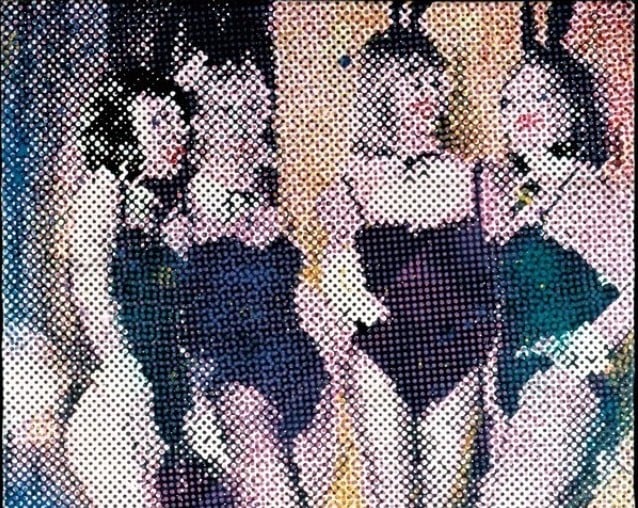
Playboy founder Hugh Hefner died yesterday at the age of 91. Over the course of his life and career, his influence extended far and wide—including into the realm of visual art. Hefner, who started out as an aspiring cartoonist before building his magazine empire, went on to support some of the top comic artists in the world. He also developed a close friendship and professional collaboration with the artist LeRoy Neiman.
Outside Playboy’s offices, Hefner and the brand he created inspired numerous works of visual art, particularly of the Pop variety. Here are seven memorable works by artists including Marisol Escobar, Sigmar Polke, and Andy Warhol that riff on Hefner and the magazine he built.
Playboy Magazine’s Anniversary Issue, January 1986, designed by Andy Warhol. © Playboy Magazine.
1. Andy Warhol’s Playboy Magazine Cover (1986)
A “beloved” Playboy contributor, it’s no surprise that the magazine tapped Andy Warhol to design its anniversary issue in 1986. The cover image was derived from a simple graphite sketch the artist made in 1985 and continues to serve as a lasting icon for the magazine, with merchandise branded with various incarnations of Warhol’s screen printed work.
Marisol Escobar, Hugh Hefner (1966). Image courtesy of the National Portrait Gallery.
2. Marisol Escobar’s Hugh Hefner
The late artist Marisol Escobar was often associated with the Pop artists of her generation, yet she managed to forge her own path. In this 1966 sculpture, Escobar gave Hefner two pipes. She explained: “Well, Hugh Hefner has too much of everything.” An image of the sculpture was used as the cover of TIME on March 3, 1967.
3. Burt Glinn’s Hugh Working (1966)
Burt Glinn was granted access to the notorious archives (pictured above) in the opulent Playboy Mansion, giving viewers behind-the-scenes access to the publishing superstar. In this photograph, a young Hefner is dressed in an ensemble he would become known for: silk pajamas and cigar.
Sigmar Polke’s Bunnies (1966). Image courtesy of the Hirshhorn Museum, Washington, DC.
4. Sigmar Polke’s Bunnies (1966)
Using his signature benday dot motif, Sigmar Polke addressed the archetypal image of 1960s desire through the lens of an outsider. Although the image is distorted, the trappings of a Playboy Bunny—skintight leotard, bunny ears, and bow tie—are noticeable enough to recognize.
Richard Hamilton’s Pin-up (1961). © 2017 Artists Rights Society (ARS), New York / DACS, London. Courtesy of the Museum of Modern Art.
5. Richard Hamilton’s Pin-up (1961)
“It is the Playboy ‘Playmate of the Month’ pullout pin-up which provides us with the closest contemporary equivalent of the odalisque in painting,” Richard Hamilton, who used the pictures of Playboy and other men’s magazines as source material for his paintings, once said.
Exterior view of Simon Claridge’s Playboy Bunny artwork at Box Galleries. Image courtesy of @simonclaridgeart, via Instagram.
6. Simon Claridge’s Playboy series (2016)
The UK-based artist teamed up with Playboy in 2016 to pay homage to some of the magazine’s most famous covers. After being granted access to the Playboy archives, which is home to every cover since 1953, Claridge selected six covers dating from 1967 to 1982 for the collection.
Richard Phillips, Playboy Marfa (2013). Courtesy of Wikimedia Commons.
7. Richard Phillips’s Playboy Marfa (2013)
Phillips recalls finding the magazine hidden away in his parent’s home as a child. He “would look inside and see this place where eroticism, politics, journalism, and literature met and could come together,” he once said. So when Playboy approached the artist in 2013 to collaborate, he was all in, creating Playboy Marfa as a nod to the legacy of 20th-century Americana.